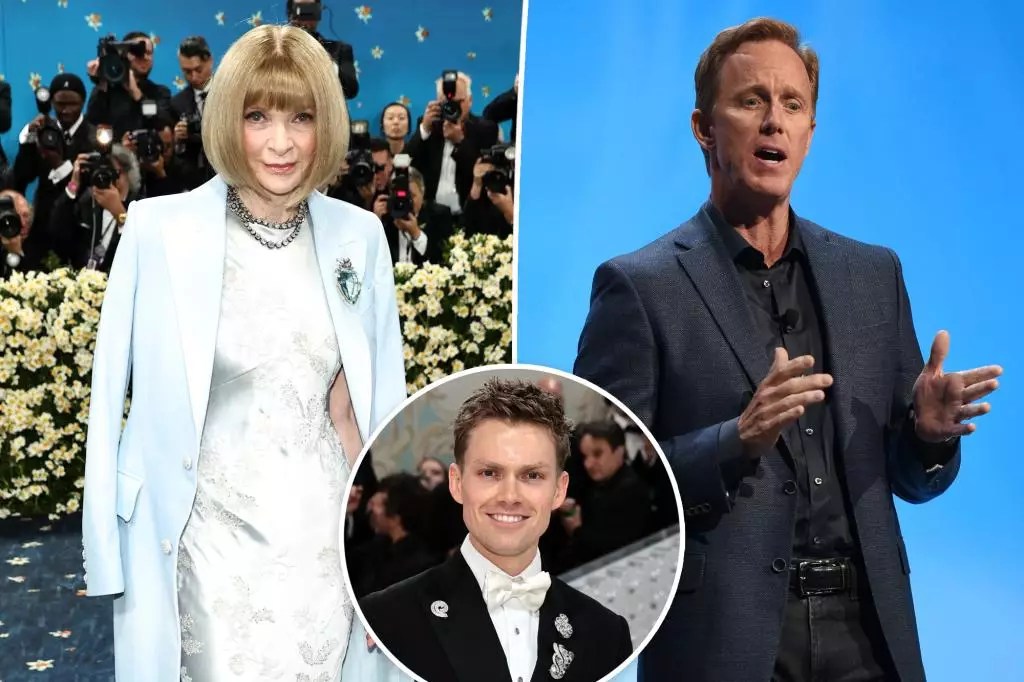In the fast-paced world of high-fashion publishing, shifts in editorial leadership can evoke a spectrum of reactions—from excitement and potential rejuvenation to skepticism and concern over the implications of connections. The selection of Mark Guiducci, a longtime colleague of Anna Wintour, as the global editorial director of Vanity Fair, highlights the complexities of such transitions. This decision, framed by whispers of favoritism and political maneuvering, has exposed underlying tensions within Condé Nast, the media behemoth that oversees this iconic brand.
While Wintour’s clout in the fashion world is unquestionable, her decision to appoint Guiducci—someone not only from her own orbit but who also shares a notable friendship with her daughter, Bee Shaffer—invites scrutiny. Critics question whether this was a sound selection based on merit or simply a nod to familiar ties. Wintour’s seemingly unilateral approach to this appointment has left some staffers feeling uneasy, characterized by an atmosphere that insiders describe as “dire.” Is this merely a reflection of generational power dynamics, or does it signal deeper issues regarding favoritism in one of the industry’s seemingly most elite circles?
The Mixed Reactions Among the Condé Nast Ranks
At a company known for its sophisticated standards and avant-garde aesthetics, the news of Guiducci’s rise has led to dissension among the ranks. Reports indicate a divided sentiment: some staffers view this decision as a sign of corporate nepotism, dubbing Guiducci a “nepo hire.” The term resonates with the idea that his ascent may have more to do with personal connections than professional qualifications. This climate of uncertainty raises the question: Can the new global editorial director truly spearhead a renaissance at Vanity Fair while under the shadow of such perceptions?
Conversely, there are those who uphold the belief that Wintour and CEO Roger Lynch—a figure purportedly left out of key discussions—share a mutual goal for the brand. Supporters of the choice assert that Guiducci, with his experience including editorial leadership at Garage magazine, possesses the creative and strategic skills needed to navigate Vanity Fair through its next phase. However, the contrasting narratives surrounding the hiring process reflect an intrinsic tension between old-school elitism and the evolving expectations of transparency and meritocracy in the workplace.
Guiducci’s Vision Amidst Internal Challenges
Emerging from the conflicts, Guiducci expressed his enthusiasm for returning to a publication that has shaped the landscape of journalism. His statement reveals an awareness of the heritage that Vanity Fair carries, as well as a sincere respect for the role it plays in cultural discourse. Yet, embarking on this new journey, Guiducci must contend with the skepticism that surrounds him. Can he break through the perceptions of nepotism and one-dimensional patronage to prove his worth? Or will the whispers of discontent stymie his ambitions before they have the chance to flourish?
Wintour, for her part, described Guiducci as an “energetic and creative editor,” suggesting that her vision for Vanity Fair encompasses innovation and a fresh perspective. But optimism from the top sometimes clashes with the on-ground realities of change. The transitional phase following the departure of former editor-in-chief Radhika Jones—who served a lengthy seven-year term—presents its own array of challenges. In absorbing the legacy of Jones, who reportedly received an emotionally charged farewell, Guiducci must carve a niche that pays homage to prior successes while also embedding his unique vision.
The Broader Implications of Leadership Choices
This dynamic within Vanity Fair opens the door to broader conversations about leadership decisions in media and their far-reaching implications. The intersection between personal relationships and professional opportunities raises ethical questions that are increasingly pertinent in a world striving for equity and diversity. Can editorial selections be isolated from personal affiliations, especially in industries as interconnected as fashion and media? The implications for workplace culture and public perception are profound.
Engaging with the global audience while managing internal dissent is no small feat, and ultimately, it will be Guiducci’s ability to transcend the initial skepticism that will define his success. The scrutiny and debate around editorial appointments serve as a microcosm of larger societal discussions about privilege, access, and the barriers that often define meritocracy in many industries today. As the curtain rises on this new chapter for Vanity Fair, followers of the publication will be keenly observing how these complex dynamics evolve.







Leave a Reply